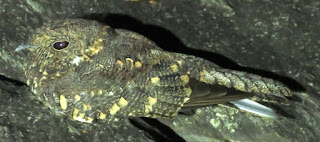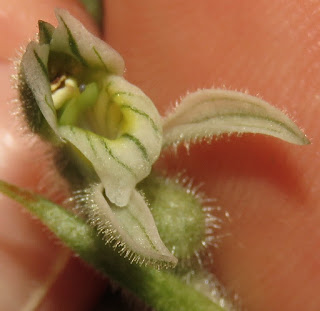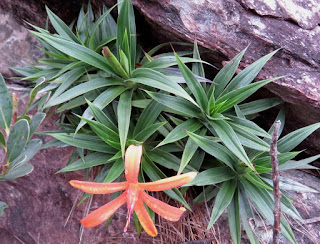January 21, 2020
After the long drive back to the Belo Horizonte airport from Canastra, our group of 17 began the preparation for our flights homeward. That is, all but four of us, who, because of the flights we were able to book, had an extra night and much of the next day. While my initial thoughts had been to just spend the day working on photos on my laptop at the hotel before my afternoon flight, queries and suggestions from Jake and Jim prompted me to help them plan a quick overnight trip to Serra do Cipó, just an hour and a half drive away. Mich decided he had enough time to join us at least for the early part of the morning. We rented a car right there at the airport and soon were on our way.
My main target was the Cipo Canastero, a small, wren-like furnariid that lives among the hyper-rugged rocky outcroppings, a habitat that is very hard to get access to. But we judged ourselves up to the challenge and went even deeper into the hills that I have dared take my WINGS tours.
We still came up empty handed, but for the other guys nearly everything was new. We didn't leave until after it was dark but there was only a little activity and nothing vocalizing: a Great Horned Owl flew in and landed briefly, a Least Nighthawk flew by giving great views, but our prize for the night was this Band-winged Nightjar.
I was excited about some of the orchids we came across. This fuzzy crane orchid hasn’t been identified for me yet.
This is a member of the huge and complex genus Oncidium.
This being the rainy season, frogs were in evidence. It took some time to find one, as they tend to shut up just as you get close enough to figure out where they are. Finally, I spotted this one. It’s tiny but deafening. As best as I can determine, it is Pseudopaludicola matuta, a confusing genus with several species only very recently described.
Right next to it was this pair of mating frogs that looked similar enough I assumed they would be the same species, but they’re not. These are probably Pseudopaludicola munduru.
The next morning we gave the canastero another shot, but still no sign of it, despite our having precise latitude and longitude from a friend who had had them here recently. At least the botanizing was exciting. This amazing orchid growing on the rocks is Acianthera johannensis.
Velloziaceae is a very prominent family here. This one is Vellozia epidendroides.
This one is Barbacenia gentianoides.
I recognized this as a Phyllanthus sp. from my time in Jamaica, where the red-flowered P. arbuscula is endemic. Note that these are flattened branchlets (phylloclades) on a leafless plant.
This huge and showy mistletoe is a Psittacanthus sp., family Loranthaceae (not Viscaceae as our temperate mistletoes).
The form of the inflorescence in this pipewort, Paepalanthus villosulus, is very distinctive.
This is Physocalyx major, looking rather like a gesneriad at first glance, especially with the waxy blooms, but it’s instead in Orobanchaceae, a family with many hemiparasitic plants like broomrape and Indian paintbrush.
We had a bit of sun this morning, and there were a few butterflies around. This well-marked, small skipper is Thespieus homochromus. The only other iNaturalist submission for this obscure species, described in 1978, is from about 75 miles SSW of here. And interestingly enough it was submitted by my friend Jeff Harding, who lives just 40 miles NNE of me in the Willamette Valley of Oregon.
The habitat where the canastero might be found isn’t very rich in bird species, so we finally ditched it and headed for brushier cerrado closer to the hotel. We scored a good number of birds here, many of them lifers for Jim, Jake, and Mich. This Pileated Finch was really excited about our owl imitations and pishing.
One of the last new birds of the trip and always a good find was this stunning Blue Finch.
























No comments:
Post a Comment